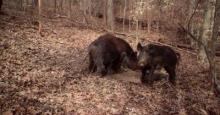The U.S. Environmental Protection Agency announces an updated action plan for federal agencies and their partners under the Great Lakes Restoration Initiative to restore and protect the Great Lakes over the next five years
The U.S. Environmental Protection Agency announces an updated action plan for federal agencies and their partners under the Great Lakes Restoration Initiative to restore and protect the Great Lakes over the next five years










